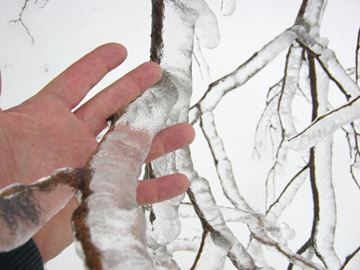
:max_bytes(150000):strip_icc()/tongass-national-forest-alaska-ICEQUAKES0721-615f8cb1d4f14795ba4e1800faa5f9f9.jpg)
Leung suggested that in addition to social media reports, frost quakes have garnered extra attention becuase they have occurred in a major city, Toronto. Sound detected in 1997 from a non-tectonic cryoseism (ice quake) cryoseismic sound Statements. As recently as Sunday, 911 operators in Illinois and Missouri took reports from callers who said they heard booms. King’s map shows frost quake markers in states such as Maine, New York, Ohio, and Wisconsin. “Soon enough, it appeared to everyone that these noises were not random due to the sheer volume of reports,” Leung said. “It amazed me how gracious people were to have a Web page where they could see that other people were hearing and feeling the same strange events as them,” King said. She assembled a Google Map to allow users to pinpoint and describe their own frost quake experience. While visiting Texas during Christmas, King heard news reports of “booms” in her hometown and turned to Twitter to see what people were saying. Since the beginning of the year, Leung has tracked numerous frost quakes in freeze-gripped parts of the Midwest. Witnesses have described the sounds as being similar to gunshots, exploding bombs and falling trees. Also known as Cryoseism or frost quake it is a seismic event that may. The boom is caused when water in the ground expands in. When temperatures suddenly reach near 0 degrees, the water table expands and starts cracking the soil and smashing nearby rock formations. This earthquake shown here is a magnitude 4.0 at 17.4km in depth just 12km S of Molalla, Oregon ( 1:24UTC). Scotland said what they heard may have been the result of a weather phenomenon called a cryoseism, often referred to as an 'ice quake.'.
#Cryoseism... or an ice quake 2017 crack#
They might crack roadways and building foundations, but that kind of result is rare.įrost quakes can strike after a pounding of rain or when the rapid melting of snow saturates underground streams. “Since frost quakes are rare, localized, cannot be monitored and tend to cause only minimal damage, the scientific community has very limited amount of information,” said University of Toronto Scarborough Climate Laboratory researcher Andrew Leung. “But typically they will not be felt very far away.”Īnd social media have given researchers a new way to study the little-discussed temblors.

But, with a recent 'heat wave' we have experienced and now a cold snap here, Maine may find itself having a 'Frost Quake' somewhere.“Even though their source sizes are small, the shaking they cause at the surface can be large because they occur so close to the surface,” Thurber said in an email to the Los Angeles Times. Right now, Maine has been laden with a few feet of snow, thicker in some areas than others but, still probably enough to avoid the scare of a 'Frost Quake'. Something that seems to be important when it comes to 'Frost Quakes' is not having a lot of snow cover. Trends of cytoseisms: Lower snow cover amounts After three days in the upper 40's to low 50's, temperatures dropped into the single numbers overnight on January 13th into January 14th. The rare weather occurrence is known as a frost quake, or cryoseism. The notes about the incident include 'Probable cyroseisms. The science of frost quakes Cold snap spurs ice booms as water expands underground. with about 4 loud booms in the one-hour period, each time shaking the reporter's home. This particular incident happened between 3:30 and 4:30 A.M. The last time the Maine Geological Survey has documented a case of a suspected 'Frost Quake' was in 2017 in Madison.

The Maine Geological Survey has kept track of reports of suspected cryoseisms in the state and has them to check out on the website.


 0 kommentar(er)
0 kommentar(er)
